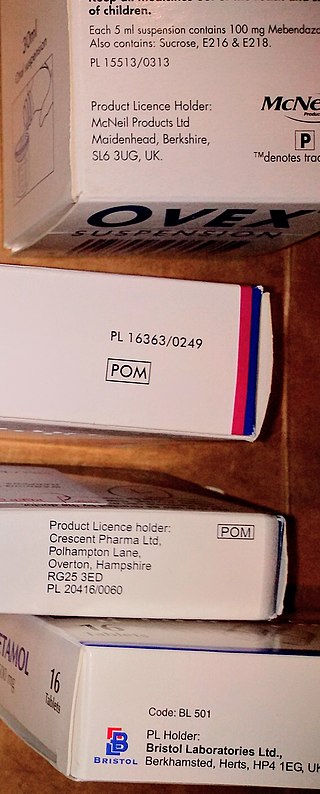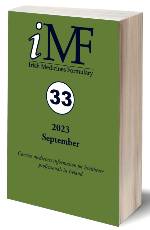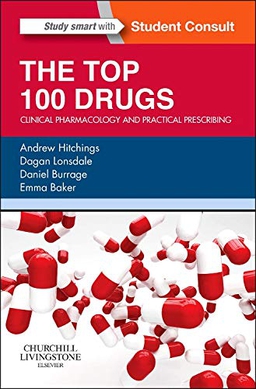
A prescription, often abbreviated ℞ or Rx, is a formal communication from a physician or other registered healthcare professional to a pharmacist, authorizing them to dispense a specific prescription drug for a specific patient. Historically, it was a physician's instruction to an apothecary listing the materials to be compounded into a treatment—the symbol ℞ comes from the first word of a medieval prescription, Latin recipere, that gave the list of the materials to be compounded.

A prescription drug is a pharmaceutical drug that is permitted to be dispensed only to those with a medical prescription. In contrast, over-the-counter drugs can be obtained without a prescription. The reason for this difference in substance control is the potential scope of misuse, from drug abuse to practicing medicine without a license and without sufficient education. Different jurisdictions have different definitions of what constitutes a prescription drug.
The pregnancy category of a medication is an assessment of the risk of fetal injury due to the pharmaceutical, if it is used as directed by the mother during pregnancy. It does not include any risks conferred by pharmaceutical agents or their metabolites in breast milk.

Prochlorperazine, formerly sold under the brand name Compazine among others, is a medication used to treat nausea, migraines, schizophrenia, psychosis and anxiety. It is a less preferred medication for anxiety. It may be taken by mouth, rectally, injection into a vein, or injection into a muscle.

Tizanidine, sold under the brand name Zanaflex among others, is an alpha-2 (α2) adrenergic receptor agonist, similar to clonidine, that is used to treat muscle spasticity due to spinal cord injury, multiple sclerosis, and spastic cerebral palsy. Effectiveness appears similar to baclofen or diazepam. It is taken by mouth.

BNF for Children (BNFC) is the standard UK paediatric reference for prescribing and pharmacology.

Triptorelin, sold under the brand name Decapeptyl among others, is a medication that acts as an agonist analog of gonadotropin-releasing hormone, repressing expression of luteinizing hormone (LH) and follicle-stimulating hormone (FSH).

Sitagliptin, sold under the brand name Januvia among others, is an anti-diabetic medication used to treat type 2 diabetes. In the United Kingdom it is listed as less preferred than metformin or a sulfonylurea. It is taken by mouth. It is also available in the fixed-dose combination medication sitagliptin/metformin.
Patient safety is a discipline that emphasizes safety in health care through the prevention, reduction, reporting and analysis of error and other types of unnecessary harm that often lead to adverse patient events. The frequency and magnitude of avoidable adverse events, often known as patient safety incidents, experienced by patients was not well known until the 1990s, when multiple countries reported significant numbers of patients harmed and killed by medical errors. Recognizing that healthcare errors impact 1 in every 10 patients around the world, the World Health Organization (WHO) calls patient safety an endemic concern. Indeed, patient safety has emerged as a distinct healthcare discipline supported by an immature yet developing scientific framework. There is a significant transdisciplinary body of theoretical and research literature that informs the science of patient safety with mobile health apps being a growing area of research.
Pharmaceutical policy is a branch of health policy that deals with the development, provision and use of medications within a health care system. It embraces drugs, biologics, vaccines and natural health products.
A formulary is a list of pharmaceutical drugs, often decided upon by a group of people, for various reasons such as insurance coverage or use at a medical facility. Traditionally, a formulary contained a collection of formulas for the compounding and testing of medication. Today, the main function of a prescription formulary is to specify particular medications that are approved to be prescribed at a particular hospital, in a particular health system, or under a particular health insurance policy. The development of prescription formularies is based on evaluations of efficacy, safety, and cost-effectiveness of drugs.
Karol Sikora is a British physician specialising in oncology, who has been described as a leading world authority on cancer. He was a founder and medical director of Rutherford Health, a company that provided proton therapy services, and is Director of Medical Oncology at the Bahamas Cancer Centre.

Sir Michael David Rawlins was a British clinical pharmacologist and emeritus professor at the University of Newcastle upon Tyne. During his medical career he chaired several executive agencies including the Committee on Safety of Medicines from 1993 to 1998, followed by the National Institute for Health and Care Excellence (NICE) for 14 years from its formation in 1999 and then the Medicines and Healthcare products Regulatory Agency (MHRA) for six years from 2014. From 2012 to 2014 he was president of the Royal Society of Medicine.

Irish Medicines Formulary (IMF) is a medicines reference for doctors, nurses, pharmacists and dentists, providing medicines information which is medico-legally relevant in Ireland. It is published in online and print formats, and lists original brands, branded generics and pure generic prescription medicines.
Covert medication, the covert administration of medicines is when medicines are administered in a disguised form, usually in food or drink, without the knowledge or consent of the individual receiving the drug. The decision-making processes surrounding covert medication should be in the best interests of the patient, transparent and inclusive.

Lumacaftor/ivacaftor, sold under the brand name Orkambi among others, is a combination of lumacaftor and ivacaftor used to treat people with cystic fibrosis who have two copies of the F508del mutation. It is unclear if it is useful in cystic fibrosis due to other causes. It is taken by mouth.
Joseph Gavin Collier is a British retired clinical pharmacologist and emeritus professor of medicines policy at St George's Hospital and Medical School in London, whose early research included establishing the effect of aspirin on human prostaglandins and looking at the role of nitric oxide and angiotensin converting enzyme in controlling blood vessel tone and blood pressure. Later, in his national policy work, he helped change the way drugs are priced and bought by the NHS, and ensured that members of governmental advisory committees published their conflicts of interest.
Emma Harriet Baker is a British professor of clinical pharmacology and consultant physician in internal medicine at St George's Hospital, London. She has a specialist interest in people who have multiple medical conditions at the same time and take several medications, with a particular focus on lung disease. She is director of the UK's first BSc in clinical pharmacology, clinical vice president of the British Pharmacological Society and training programme director at Health Education England.

The Top 100 Drugs: Clinical Pharmacology and Practical Prescribing is a pocket-size medical manual focusing on the most commonly prescribed medicines by the British National Health Service (NHS). It was first published by Churchill Livingstone, Elsevier, in 2014, revised in a second edition in 2018, and again in 2022 in a third edition. It is authored by four clinical pharmacologists from St George's Hospital, London; Andrew Hitchings, Dagan Lonsdale, Daniel Burrage and Emma Baker.











